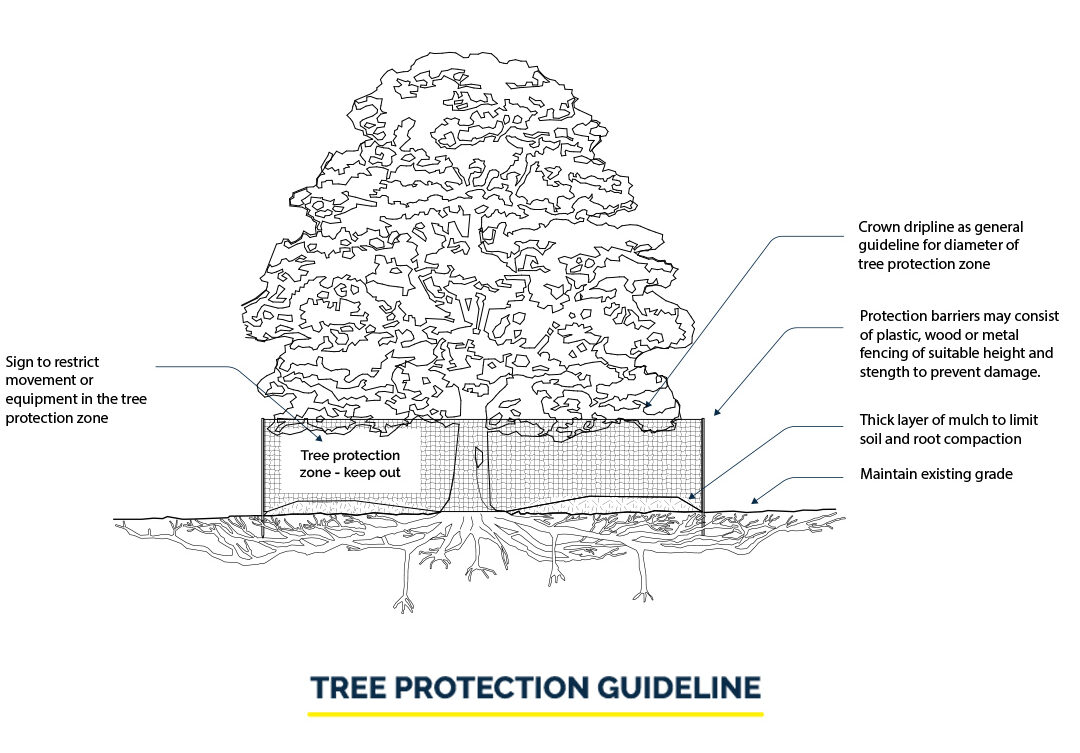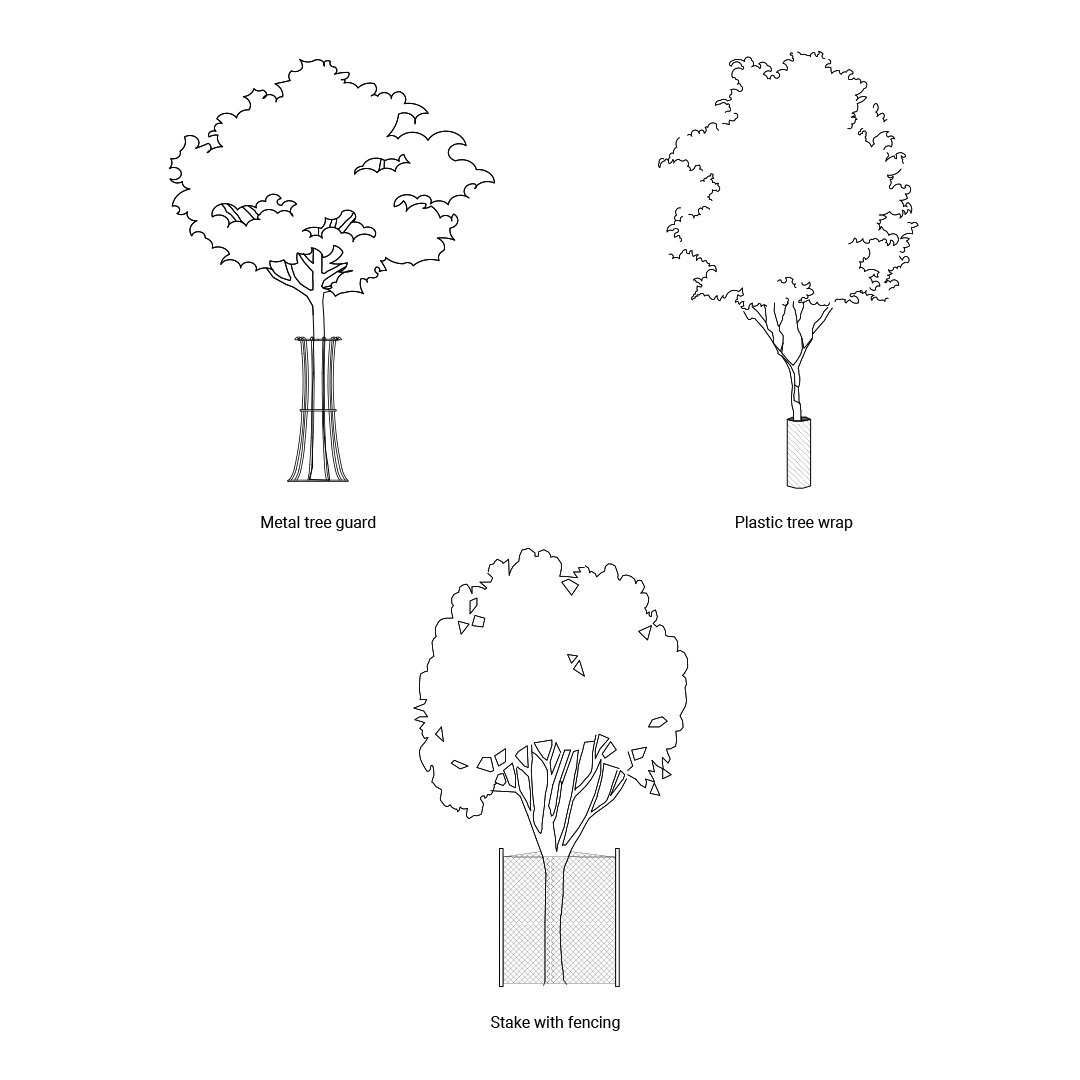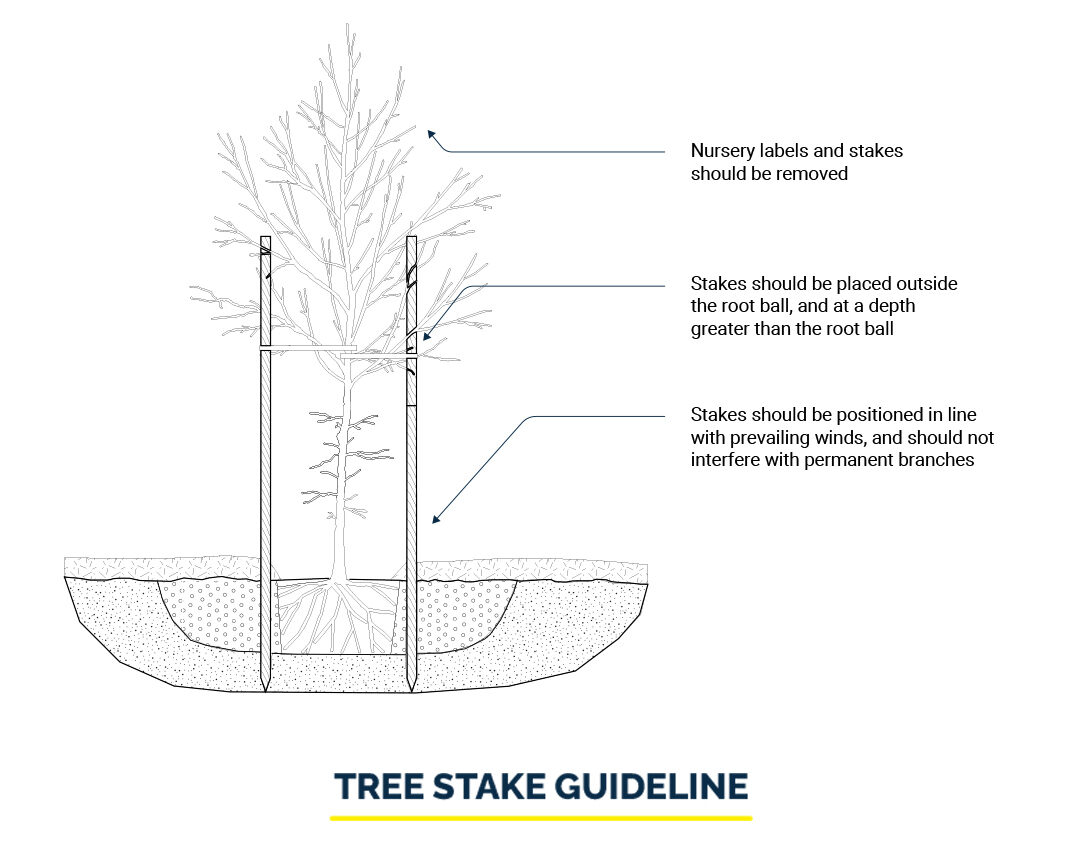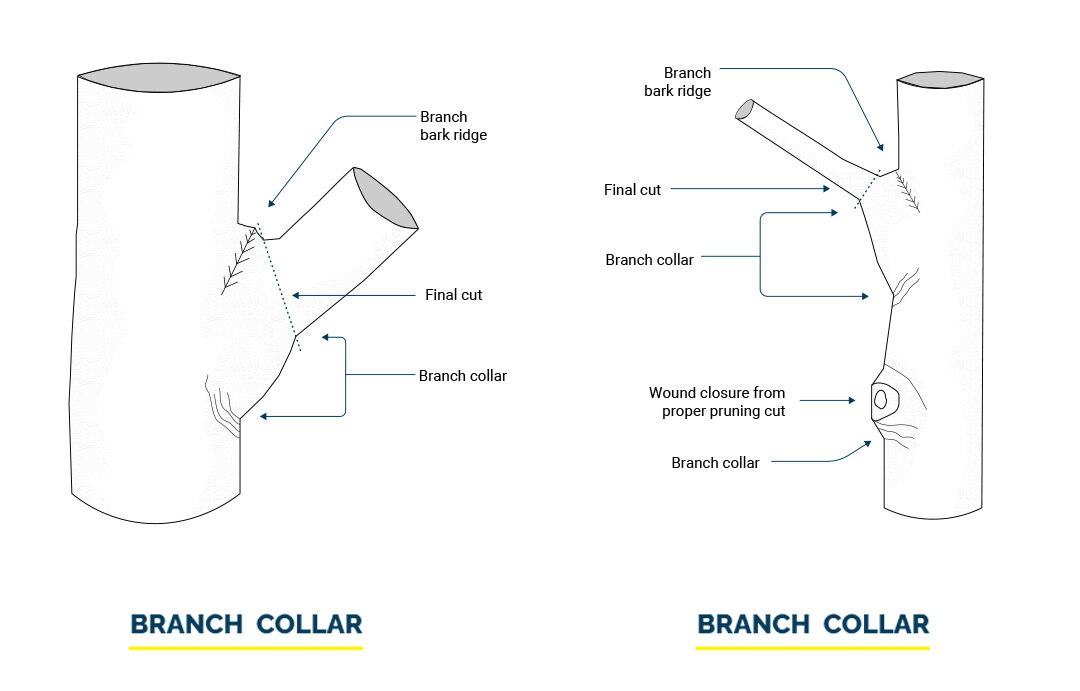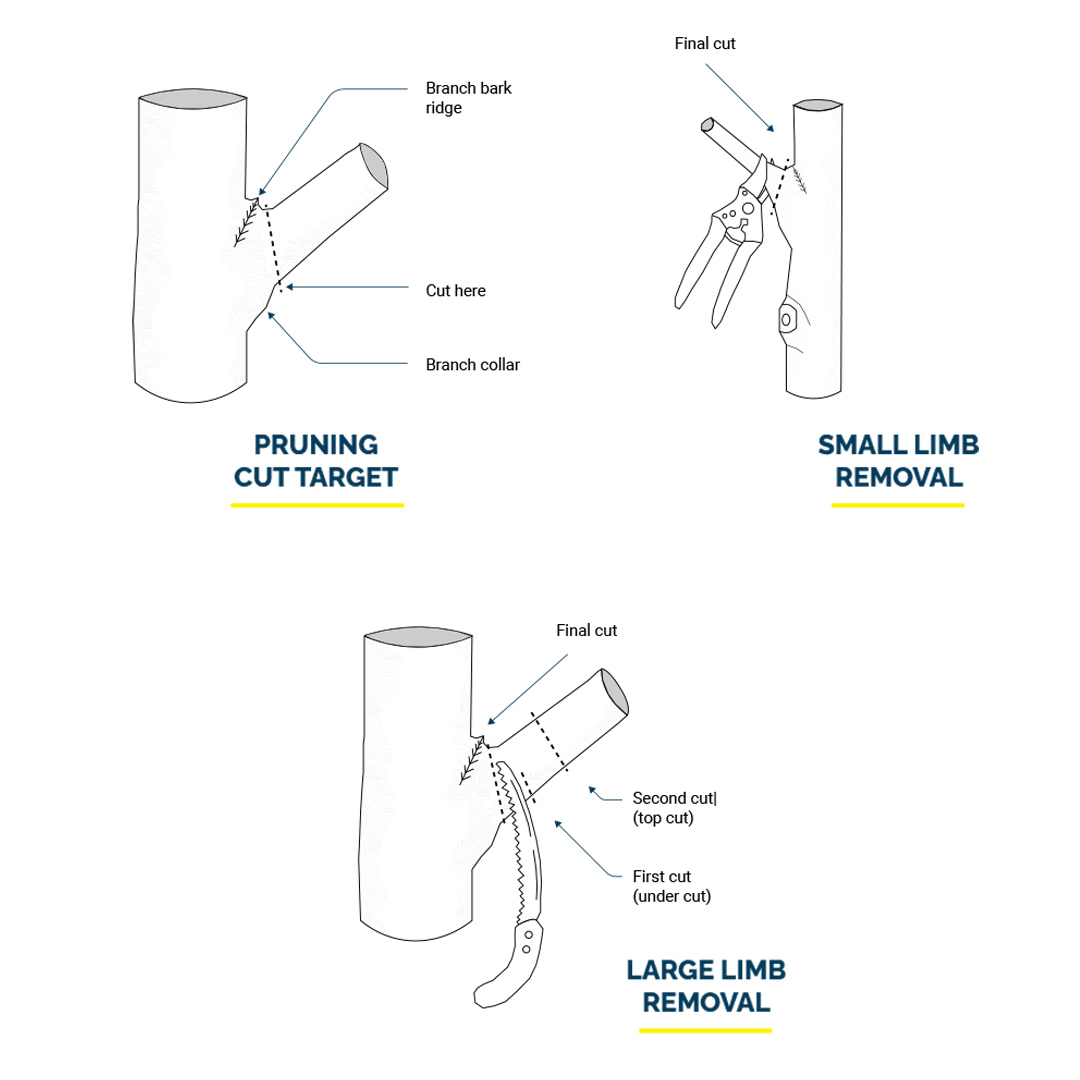After trees are planted, some post-planting factors can increase the chances of successful establishment. This section includes information and considerations regarding auditing and documenting the process, watering, mulch, tree protection, maintenance and pruning.

1. Audit and documentation
Documentation is key to the long-term success of tree-planting programs. Recording details can help in making management decisions and providing information to others. This information may include the following:
- Quantity and species type planted
- Location
- Tree source: nursery, farm, etc.
- Date planted
- Date and type of pruning and other maintenance
- Damage to trees (weather, vandalism, construction, etc.)
2. Watering
Watering is one of the most critical aspects to the health and establishment of a newly planted tree.
- Effective watering is based on needs, not on a calendar. To assess the need, manually check the root ball, the backfill and surrounding soil.
- A newly planted tree should receive 25 millimetres of rainfall/watering per 2 centimetres of tree caliper (diameter) per week.
- Slow, gentle soaking of the root zone to approximately 30 centimetres deep is ideal, being mindful of the drainage of the site soil (root ball should not be flooded in planting hole). Slow-release watering bags are available for purchase if needed.
- Ensure there is a plan for water management.
3. Mulch
Mulches are materials placed over the soil surface and can assist with tree establishment by reducing moisture loss, moderating soil temperature, and preventing weed growth. Mulches are classified in two categories: organic and inorganic.
- Using organic mulches (such as shredded bark, hardwood chips, or evergreen needles) is one of the most beneficial practices for the health of a tree. As the mulch decomposes, it releases essential nutrients and improves soil structure. Ideally organic mulches are topped up every one to two years.
- Inorganic mulches include stone, lava rock, pulverized rubber and other materials. These do not decompose over time and therefore do not need to be replenished as often.
- Mulch will also reduce the chances of maintenance damage (mower, line trimmers).
- Mulch should be 5–10 centimetres deep and should not be placed against the trunk as this promotes rot and attracts disease. Thicker is not better when it comes to mulch.
- The size of the mulched area depends on the tree size. For a 2.5–5 centimetre- caliper tree, the mulched tree circle should be at least 1.8 metres in diameter.
4. Tree Protection
Longer-term root protection is a critical part of tree protection. The root zone is typically determined by the width of the crown. Keep in mind that root zones can extend well beyond this measure. Keep root protection in mind when planning changes to the elevation or digging in the root zone.
Trunk protection
Trunk protection is installed around the trunks of trees to protect against damage that could come from situations such as animal feeding, deer rubbing, mowers and trimmers. This protection can limit the amount of physical damage to the trunk of a young tree. There are many options and alternatives available, including staked plastic or metal fencing.
Considerations to be aware of include the following:
- Wraps tend to hold moisture on the bark and can lead to fungal problems.
- Most guards are loose fitting and have holes for ventilation. It is important to remove and replace guards as they are outgrown.
- Natural sprays (derived from animal blood or bone meal) can be applied to deter herbivores from causing physical damage.
Staking
Staking provides stabilization to newly planted trees while they become established. This may be critical to trees with large crowns or those on windy sites. Stabilization will further reduce movement of the root ball. In urban sites, stakes are sometimes used to protect against potential maintenance damage.
Considerations to be aware of include the following:
- Staking is not always necessary for newly planted trees, and it may cause detrimental effects if trees are staked for a prolonged period. If secured too rigidly, the tree will develop a less sturdy root system.
- One to three stakes are normally used to stabilize a tree. Avoid driving the stake into the root ball and stabilize the tree as low along the trunk as possible while providing necessary support.
- The material used to attach the tree to the stake should be broad, smooth and somewhat elastic (e.g., an arbor tie).
5. Maintenance schedule
When completing a work plan for maintenance, tree-pruning specifications are used to help convey information to everyone involved and can be used to help document work history. Effective pruning time is species dependent; however, most routine pruning can be achieved at any time of the year.
- Specifications must include the pruning objective and type of pruning required. They should also include a minimum or maximum diameter of branches to be removed to establish the extent of pruning.
- E.g., crown cleaning of dead and damaged branches over the diameter of 2 centimetres.
6. Pruning
- Pruning is the systematic removal of living or dead parts of a plant, typically branches, to reduce size, maintain shape, enhance health, control/promote flowering or to regulate growth. When pruning, think about your objectives and desired outcomes.
- Proper pruning improves tree structure and form. This practice improves tree health by increasing airflow, encouraging new growth and reducing the potential for pest or disease problems. Pruning also addresses safety by removing weak or broken limbs, as well as limbs that interfere with structures or traffic.
- Pruning cuts create a wound in the tree, and if done incorrectly, may cause serious damage or eventual death of the tree.
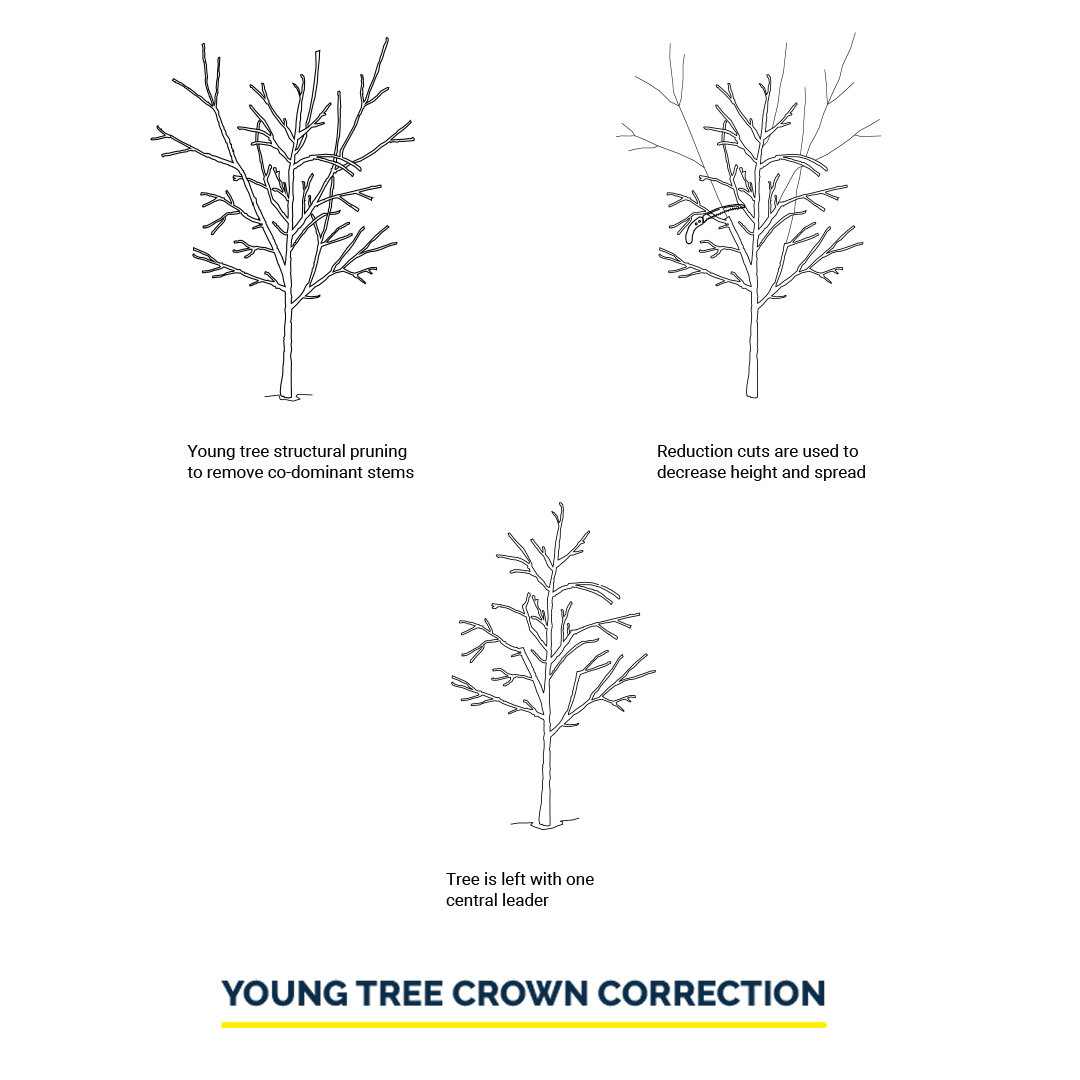
Pruning considerations to be aware of include the following:
When
- Effective pruning time is species dependent; however, pruning is most often recommended in the dormant season.
- Avoid pruning newly established transplants and trees experiencing drought stress.
- Every year, inspect your trees and prune branches that are dead, weak, diseased or crossing each other.
Why
- Increase vigour and structure.
- Reduce potentially hazardous branches.
How much
- Generally, prune no more than 25% of the canopy (after removing dead, damaged and diseased limbs).
- Use proper pruning techniques and maintain the branch collar.
Weight distribution
- On average, half the foliage should be in the lower two-thirds of the tree. Keep the main leader stem (if applicable); otherwise, the tree may lose its form and shape, and be susceptible to weak branch attachments in the future.
Species response
Species response refers to the tree’s ability to close over a wound and recover from the damage. Some species have more vigorous responses to pruning cuts than others. The time of year and environmental factors may also influence a species response to wound closure.
Considerations to be aware of include the following:
- Natural form / habit of the tree – how does it grow? Do the branches naturally extend upwards or downwards to form its shape?
- “Bleeding” trees have annual sap flow that will weep from open wounds in the spring (e.g., maple, birch). Pruning for these tree families should be done either before or after sap flow.
- Insect and disease cycles – they may be attracted to wounds and take advantage of a tree’s weakness.
- Flower and fruit production – prune directly after flowering.
- Prevention leads to enhancement – making good pruning cuts early in a tree’s life can increase its health and vigour.
Safety while pruning
- Only use tools that you are trained and experienced with.
- Wear protective gear (e.g., hard hat, gloves, safety glasses).
- Know your own limits as well as the limits of your tools.
- When in doubt, call a professional.
Pruning young trees
Conducting preventative pruning on a young tree can decrease the need for maintenance in the future. A crown that has a strong structure and air circulation is less likely to fail during storm events.
At planting
- Pruning should be limited to removing dead leaves or branches.
- Branches should be retained on the lower trunk to help form a strong trunk taper.
Once established
- Cleaning should be performed.
- Rubbing and poorly attached branches should be removed.
- A central leader (the dominant vertical trunk in the centre of a tree), or leader(s) as appropriate to the species, should be developed.
- A strong, properly spaced regular branch structure should be selected and maintained.
- Interfering branches should be reduced or removed.
1-3 years after planting
- Select and train primary scaffold branches.
- Remove crossing branches.
- Remove codominant stems.
- Ensure adequate spacing.
4-6 years after planting
- Perform selective thinning.
- Remove dead, interfering, split or broken branches.
- Reduce narrow angles of attachment.
- Remove lower branches.


